Colin McCrate's Blog, page 17
February 17, 2017
Encyclopedia Botanica Podcast, Episode 32: Potatoes

Potatoes are a surprisingly satisfying crop to grow. If you’re not a huge fan of these tubers, tasting freshly harvested homegrown potatoes will definitely change your feelings about the crop. Along with peas and onions, they are one of the first crops we plant in the spring. You really feel like you are doing something useful when burying the big chunks of 'seed potatoes.’
HOW TO LISTEN:Listen right now in your browser by clicking above.Subscribe in iTunes (or your favorite podcast player) to have our podcasts sent directly to your device.
SHOW NOTES:
In this episode, we discuss:
How potatoes growPlanting considerations and other growing tipsVarieties we love

Important Take-aways:
Potatoes are a long season crop, so if you haven't done so already, planting potatoes will force you to finish planning out your garden for the season.Fresh, or what are often called 'new potatoes' are ready to harvest as early as June and fully mature potatoes are usually ready to start harvesting mid-summerWe consider potatoes short to medium height crops. Much of the growth happens underground, where rhizome-like stems spread and produce tubers.Potatoes are grown from seed potatoes, which are small potatoes or parts of a potato from the previous season.Once planted, the sprouts on the seed potatoes send out one or two main stems. Part of these main stems grow below ground, and part grow above ground. Below ground, those main stems send out succulent root-like structures called stolons. Stolons are a second set of underground stems, part of which will eventually swell to form the tuber that you harvest and eat. The part of the main stem that grows above ground will set leaves and photosynthesis to feed the plant.For planting instructions, check out this blog post Hilary created a few years ago
Like what you hear? Please share our podcast with a friend. Subscribe on iTunes or your favorite podcast player so you never miss a beat. And we'd really appreciate you showing us some love by leaving a rating and review on iTunes.
Have a topic you'd like see us dig in to? Leave us a note in the comment section below or #EBpodcast on Instagram and Twitter!
We need your support to keep make fresh, quality weekly content! Support us here:
February 10, 2017
Encyclopedia Botanica Podcast, Episode 31: Peas!

Oregon Giant Snow Peas
We think fresh homegrown peas are reason enough to have your own garden.
HOW TO LISTEN:Listen right now in your browser by clicking above.Subscribe in iTunes (or your favorite podcast player) to have our podcasts sent directly to your device.SHOW NOTES:In this episode, we discuss:
A few interesting historical facts about peasTypes of garden peasPlanting techniquesLegume inoculantGrowing and harvesting tipsImportant Take-aways:
In the 19th century, an Austrian monk named Gregor Mendel used them to develop the principles of genetics. Mendel chose peas because they are fast and easy to grow and easy to cross-pollinate. His observations helped him figure out how hereditary traits are passed from generation to generation. For example, Mendel discovered that, when he crossed a pea plant with a pure white flower and a pea plant purple flower (the parental or P generation), the result was not a blend.Peas fall into two categories, shelling peas and snap peas. Shelling peas are typically grown to maturity on the vine and then removed from the shell before eating. Snap peas are harvested before they are fully mature on the vine and usually eaten whole with the shell on.At Seattle Urban Farm Co, we like to start peas indoors, a few trays every week, starting in late January. We start them in plug trays with 72 cells. Since each plant is in an individual cell, they're really easy to transplant out into the garden. It's important to transplant them out when they're about 3-6 inches tall. Once they grow taller than that, they all start to grow together in the flat. If you do happen to have started too many plants you can snip the extra down and eat them! They can be used as a garnish, added to salads, or sauteed!Peas can also be direct-seeded into a gardenLegume inoculant is Rhizobia bacteria. Simply put, adding extra Rhizobia bacteria to the soil increases the vigor and yield of your pea plants. The bacteria in inoculant also help to capture the nitrogen, that is naturally occurring in the air, and helps make it available for the next round of plants that will grow in that soilPeas are a climbing crop. Make sure they are in contact with the trellis you have set up for them. We strongly encourage you to tie them up with garden twine throughout the season.Plan to harvest the peas regularly so the pods do not become overripe and unpalatable.For more information on growing peas check out these useful blog posts from our archives:
PEAS, March 29, 2012TRAIN YOUR PEAS!, March 28, 2012FIRST TRANSPLANTS OF THE YEAR, March 3, 2011HOW TO BUILD A BAMBOO TRI-POD TRELLIS: A PHOTO TUTORIAL, March 10, 2015


Like what you hear? Please share our podcast with a friend. Subscribe on iTunes or your favorite podcast player so you never miss a beat. And we'd really appreciate you showing us some love by leaving a rating and review on iTunes.
Have a topic you'd like see us dig in to? Leave us a note in the comment section below or #EBpodcast on Instagram and Twitter!
We need your support to keep make fresh, quality weekly content! Support us here:
Become an Encyclopedia Botanica Patron!February 3, 2017
Encyclopedia Botanica Podcast, Episode 30: Planning Your Annual Cut Flower Garden, Part 2

Sweet peas
Welcome back to part two of our series on cut flowers. If you haven't listened to part 1 of the series - episode 29 - go back and check that out before listening to this one. It will make more sense that way, and then you'll have Hilary's whole top 10 list. Last week we talked about annual flowers that can be direct seeded in your garden, and this week we're focusing on annual flowers that do better as transplants.
HOW TO LISTEN:
Listen right now in your browser by clicking above.Subscribe in iTunes (or your favorite podcast player) to have our podcasts sent directly to your device.

SHOW NOTES:
In this episode, we discuss:
Species and varieties of transplanted annual cut flowers that we loveImportant Take-aways:
The transplanted annual-cut flowers we discuss in this episode are:
MarigoldsAfrican-typesQueen SophiaSnapdragonsMadame ButterflyRocketAnimationStockKatzQuartetSweet peasSpencer-typesNimbusErewhonEarl GreyBeaujolaisHappy BirthdayOban BayWindsorOther flowers mentionedPhloxScabiosaNicotinaGlobe AmaranthLarkspur
Larkspur

Yellow Quartet Stock
For more information on growing these flowers and photos, check out the blog post I created a few years ago that inspired this episode: Planning Your Annual Cut Flower Garden
Two books I recommend for flowering arranging tips and inspiration:
[image error] [image error][image error] [image error]
Like what you hear? Please share our podcast with a friend. Subscribe on iTunes or your favorite podcast player so you never miss a beat. And we'd really appreciate you showing us some love by leaving a rating and review on iTunes.
Have a topic you'd like see us dig in to? Leave us a note in the comment section below or #EBpodcast on Instagram and Twitter!
We need your support to keep make fresh, quality weekly content! Support us here:
Become an Encyclopedia Botanica Patron!
January 27, 2017
Encyclopedia Botanica Podcast, Episode 29: Planning Your Annual Cut Flower Garden, Part 1

There are many similarities between growing annual vegetables and annual flowers. Just like a vegetable garden, a great annual cut flower garden takes a little planning. This week we discuss general planting considerations and take a look at some of our favorite and most reliable direct seeded annual flowers for cutting.
HOW TO LISTEN:Listen right now in your browser by clicking above.Subscribe in iTunes (or your favorite podcast player) to have our podcasts sent directly to your device.
SHOW NOTES:In this episode, we discuss:
How to prepare for planting flowersDirect seeding vs. transplantingSpecies and varieties we love
For scale, Hilary in a patch of comos
Important Take-aways:
Some species will thrive when direct seeded into the garden, and some need to be transplanted.As with an annual vegetable garden, I highly recommend planting your annual cut flowers in a bed that has specifically been set aside for annual crop production. Remember that annual plants are those which complete their life cycle in a single season and need to be replanted every year.It is important to plant your flowers into a bed that has been properly prepared. The soil should be nice and loose, fertilized, and the bed should be set up for some type of regular irrigation. From my experience, all of the species that we will discuss today will thrive in a bed that has been prepared (soil tilth, pH and nutrient wise) for vegetable production.Direct-seeded types:
Comos
UniqueDouble ClickSensationDillMammothVierlingNasturtiumsEmpress of IndiaTrailing typesAlaska ApricotNigellaLove In The MistDelft BlueSunflowersZinniasBenary’s GiantsOklahomaCactus-typesQueen Red LimeQueen Lime With BlushFor more information on growing these flowers and photos, check out the blog post I created a few years ago that inspired this episode: Planning Your Annual Cut Flower Garden

You don't need a ton of space! This 2x8 foot bed along a house was ample space to grow flowers.
Like what you hear? Please share our podcast with a friend. Subscribe on iTunes or your favorite podcast player so you never miss a beat. And we'd really appreciate you showing us some love by leaving a rating and review on iTunes.
Have a topic you'd like see us dig in to? Leave us a note in the comment section below or #EBpodcast on Instagram and Twitter!
We need your support to keep make fresh, quality weekly content! Support us here:

January 20, 2017
Encyclopedia Botanica Podcast, Episode 28: Smart Seed Ordering, Part 2

This week we continue our seed ordering discussion by talking about quantities of seed and how much of each type you'll want to order. We'll also touch on why it might actually make more sense for you to buy some crops as seeds, but others as transplants from your local nursery. Lastly, we'll share tips and clues that you can use to select the right variety for your intended application.
HOW TO LISTEN:Listen right now in your browser by clicking above.Subscribe in iTunes (or your favorite podcast player) to have our podcasts sent directly to your device.SHOW NOTES:In this episode, we discuss:
How much seed to orderStarting from seed vs. buying as transplantsOrdering seeds for your intended applicationsImportant Take-aways:
As a general rule for the beginning gardener, when trying to determine the quantity of seeds to order for a new crop, I would suggest, 'when in doubt, order the smallest amount.'. For many crops, this will provide you with all of the seed you need or the entire season or for multiple seasons.Consider the lifespan of seed. Most vegetable seeds have the potential to remain viable for at least 2-5 years, but there are definitely some exceptions. Allium seeds tend to store for only a one season, and peppers, spinach and cilantro store for only about 2 seasons. Potato seed, which is a tuber, will only store for a few months before it starts to rot.We're all about starting our transplants from seed at Seattle Urban Farm Co., and highly recommend you experiment with this on your own. But, if you don't have the space or time, there is nothing wrong with buying healthy transplants from your local nursery.When it comes to certain crops, I'd actually recommend buying them as transplants from your local garden center unless you have a dedicated plant nursery. Many long season crops, such as tomatoes, onions, leeks, peppers and eggplant need to be started in the winter, but may not be planted out into your garden until spring or even early summer. This means that you will need to care for them on a daily basis for up to 3-4 months before they can be planted outside.You may search for seeds that are especially adapted to a particular season or your particular climate. For example, some seed descriptions will indicate if a variety was bred to tolerate specific weather conditions. This information may be included in the variety name, as in 'Black Summer' bok choi. Alternatively, this information may be nestled into the larger description of the crop, which might say something like 'great summer variety' or 'slow bolting' or 'best when planted for spring production.' Some descriptions even call out regions in which the crops is know to grow well.Like what you hear? Please share our podcast with a friend. Subscribe on iTunes or your favorite podcast player so you never miss a beat. And we'd really appreciate you showing us some love by leaving a rating and review on iTunes.
Have a topic you'd like see us dig in to? Leave us a note in the comment section below or #EBpodcast on Instagram and Twitter!
We need your support to keep make fresh, quality weekly content! Support us here:

January 13, 2017
Encyclopedia Botanica Podcast, Episode 27: Smart Seed Ordering Pt. 1

Hello and welcome back to the EB podcast! We’re so excited to be back and we’re looking forward to a full year of podcasts in 2017. It’ll be fun to start right at the beginning of the year and talk about the season as it progresses!
Growing from seed can have the potential to dramatically increase your opportunities for better yields by allowing you much more control over the varieties of each crop that you can plant in the garden. Keeping a well-stocked seed library also allows you to take advantage of production opportunities on your own schedule throughout the season.
HOW TO LISTEN:Listen right now in your browser by clicking above.Subscribe in iTunes (or your favorite podcast player) to have our podcasts sent directly to your device.SHOW NOTES:In this episode, we discuss:
How to choose your seed supplierSeed definitions such as organic vs. non-organic seed and open pollinated vs. hybrid and what they mean for you and your garden.Important Take-aways:
Growing from seed can have the potential to dramatically increase your opportunities for better yields by allowing you much more control over the varieties of each crop that you can plant in the garden.Keeping a well-stocked seed library also allows you to take advantage of production opportunities on your own schedule throughout the season.Certified Organic refers to seedstock that was harvested from plants that were grown certified organically. Certified organic seed can not be sourced from plants grown with synthetic chemical fertilizers, pesticides, and fungicides. Not all varieties are available in organic seed stock so you can still grow non-organic seedstock organically in your garden - it's just that the source wasn't organic.Organic seeds definitely cost more than other types, but are worth buying when possible to support the expansion of organic seed production.Open pollinated vs. hybrid: Open pollinated seeds, which are often distinguished by the abbreviation OP, are those that 'breed true to seed' meaning that the seeds collected from the plants will produce a crop the next year that is very similar to the parent. Using open pollinated seeds provides you with the option for seed saving in your own garden.Some seed catalogs will indicate which varieties are 'Heirloom.' There is not a defined age a variety must be to be considered heirloom, but varieties considered heirloom tend to be at least 50 years old; and heirlooms are also open-pollinated types.Plant breeders sometimes produce hybrid (F1) varieties by crossing two distinct or 'pure' genetic lines. Each of these pure lines exhibit one spectacular trait: one of the lines may produce high yields, while the other may produce resistance to a common disease. The crossing of the two lines creates a plant with both high yields and a resistance to the disease. This has obvious benefits. The downside of hybrid seeds is that they don't 'breed true,' so you cannot save your own seed.Heard on the Episode:
“...Grow what you like to eat. So if you're not a fan of kale, that's okay, but don't grow kale!.” - Kellie Phelan
Like what you hear? Please share our podcast with a friend. Subscribe on iTunes or your favorite podcast player so you never miss a beat. And we'd really appreciate you showing us some love by leaving a rating and review on iTunes.
Have a topic you'd like see us dig in to? Leave us a note in the comment section below or #EBpodcast on Instagram and Twitter!
We need your support to keep make fresh, quality weekly content! Support us here:

December 19, 2016
Encyclopedia Botanica Podcast, Episode 26: Crop Rotation

Over the past two episodes, we discussed tools you can use to decide where your crops should be planted in a given season, but it's important to plan where to plant them from year to year. This week we are going to go over why you want to rotate and why certain crop families require more frequent rotation.
HOW TO LISTEN:
Listen right now in your browser by clicking above.Subscribe in iTunes (or your favorite podcast player) to have our podcasts sent directly to your device.SHOW NOTES:
In this episode, we discuss:
Why rotate cropsWhich crop families are the most important to rotateImportant Take-aways:
Crop rotation is the practice of planting annual crops in different spaces each year to avoid pest and disease problems, and to use soil nutrients efficiently.To create a crop rotation plan:Make a list of all the crops you plan to growIdentify the major crop families that you’ll be growingCreate a garden map and label where crop families are plantedMove crop families around from year to yearAim for a 3-4 year crop rotation when possibleIn a small garden, true crop rotation is very difficult. The main thing to keep in mind is that there are several plant families that should be rotated to a new spot each year. Those families are:Alliums: Onions/Leeks/Scallions/GarlicBrassicas: Kale/Cabbage/Broccoli/Cauliflower/CollardsCucurbits: Summer Squash/Pumpkins/Winter Squash/CucumbersNightshades: Eggplant, Peppers, Potatoes, TomatoesHere is a crop rotation planning example from our book, Food Grown Right, In Your Backyard:

Like what you hear? Please share our podcast with a friend. Subscribe on iTunes or your favorite podcast player so you never miss a beat. And we'd really appreciate you showing us some love by leaving a rating and review on iTunes.
Have a topic you'd like see us dig in to? Leave us a note in the comment section below or #EBpodcast on Instagram and Twitter!
We need your support to keep make fresh, quality weekly content! Support us here:

December 9, 2016
Encyclopedia Botanica Podcast, Episode 25: Growth Habit

This week we will be continuing the garden planning conversation by discussing another factor that can help guide your garden planning, and that’s plant growth form. Last week I mentioned that my motto was “plant like with like”. Grouping plants with the similar growth habits is another element to consider when organizing your garden.
HOW TO LISTEN:Listen right now in your browser by clicking above.Subscribe in iTunes (or your favorite podcast player) to have our podcasts sent directly to your device.SHOW NOTES:In this episode, we discuss:
How to use the growth habits of annual crops as a tool to help guide your garden planning.
Important Take-aways:
Some crops have growth forms that make them incompatible with other plants. By planting your crops in groups, it's easier to keep compatible plants together and incompatible plants apart.
I like to categorize crops based on their size at maturity. We will designate crops as either Tall crops, Medium Height crops, Short crops or Sprawling crops
Tall Crops: Since some plants either have tall growth forms or are trellised on tall structures, it is important to put these plants in an area where they will not shade other, shorter garden crops.
Medium Height Crops: These are crops that grow only about 2-3 feet tall. Some of these plants benefit from staking so that they can remain upright when loaded with fruit (a good example would be a pepper plant), but generally they don't need any large or complicated trellising.
Short Crops: These crops are very short (6-12" tall). Examples are many root crops such as carrots (where most of the growth is below ground) and salad greens (like lettuce and spinach). Short crops are great because they can be planted in areas that taller crops might fit and can be planted next to taller crops (as long as the short crops are in a location where they will still receive sun exposure (anywhere but the north side of a tall crop).
Sprawling Crops: Then there are the vining and spreading crops. These plants can be trellised so that they fit into the 'tall crops' category, but most will also grow well if left to sprawl across the ground.
Crops with similar growth habits tend to have similar lifespans
Heard on the Episode:“...these categories are meant to be guides to help you make decisions. It's important not to become too attached to any one of these ideas because you'll need to be flexible as issues arise in your garden during the course of the season. ” - Hilary Dahl
“It sounds like short crops are the most versatile category. And while they totally could go at the south side of a garden bed in that stairstep down example, they can also get sprinkled in where there is space, as long as they get enough sun. ” - Kellie Phelan
Like what you hear? Please share our podcast with a friend. Subscribe on iTunes or your favorite podcast player so you never miss a beat. And we'd really appreciate you showing us some love by leaving a rating and review on iTunes.
Have a topic you'd like see us dig in to? Leave us a note in the comment section below or #EBpodcast on Instagram and Twitter!
We need your support to keep make fresh, quality weekly content! Support us here:

December 2, 2016
Encyclopedia Botanica Podcast, Episode 24: Crop Lifespan
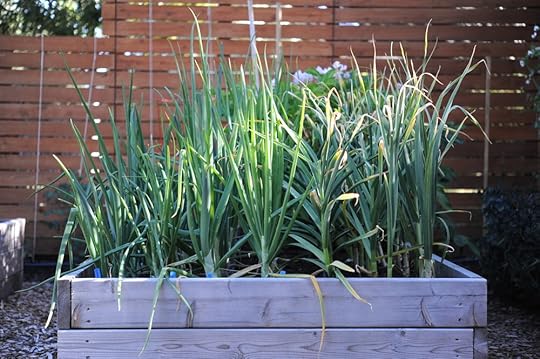
This is the first of many episodes we will share over the next few months on the topic of garden planning. Right now it is the beginning of December and it may seem a bit early to start thinking about planning your garden for next season. No matter how simple or comprehensive your garden plan will be, these episodes will be here for you to revisit as many times as you'd like over the coming months and seasons to help you devise an intricate plan or simply serve as an inspiration for future projects.
HOW TO LISTEN:Listen right now in your browser by clicking above.Subscribe in iTunes (or your favorite podcast player) to have our podcasts sent directly to your device.SHOW NOTES:In this episode, we discuss:
Lifespan of annual cropsDays to maturitySuccession plantingImportant Take-aways:
Regardless of your prior experience, knowing more about the life span and growth cycle of your crops will help you make decisions about what to plant, when to plant it, and how much of it to plant.I like to break annual crops into 4 different categories: Short season, half season, long season, and super long season. Short season crops can be grown from seed or from transplants and are usually ready to harvest in 20-60 days. Since they grow quickly, you can plant these crops several times over the course of the year. Examples include arugula, cilantro, lettuce, radishes and spinach.Half season crops take roughly half of a typical growing season to reach maturity. They usually reach maturity in 50-80 days. Examples of half season crops are bush beans, carrots, beets and many Brassica crops like cabbage, cauliflower and broccoli.Long season crops take around 70-120 days to reach maturity. In some climates, that's almost the entire growing season. Examples include melons, peppers, tomatillos, tomatoes and winter squash.Then there are the super long season crops. Super long season crops tend to be planted in the fall and are harvested the following summer. As an example, garlic is typically planted in late fall and then harvested the following June or July, so the crop may be in the garden for up to 9 months.Plant crops with similar lifespans together.How a crop is harvested will effect how long it will remain in the garden.Below: The first shows the empty half of the raised bed after the onions and garlic (see top photo) were harvested. The remaining photos show how the empty portion of the bed was planted with half-season crops after the onions and garlic were pulled.
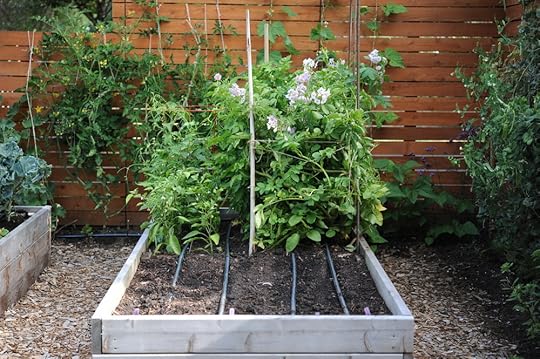

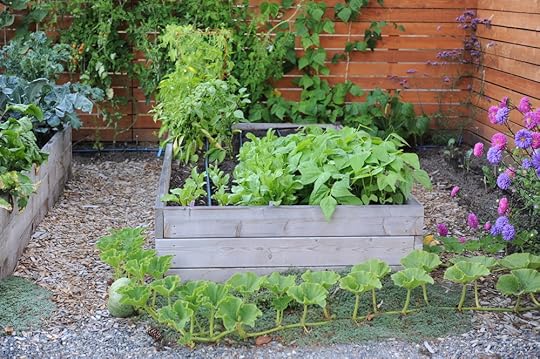
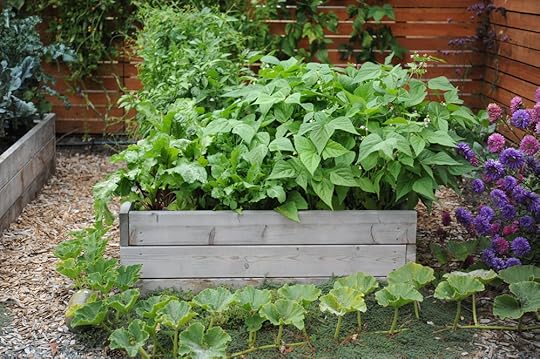
Heard on the Episode:
“For me, one super helpful concept is to simply plant crops with similar lifespans together. If you plant an entire bed with half season crops like bush beans, cauliflower, carrots and beets, you may be able to harvest all of these crops within a few weeks of each other mid-season. Opening up an entire bed will make it easier to properly prepare the soil for a new planting. ” - Hilary Dahl
“Once you understand crop lifespan and harvesting, [garden planning] actually pretty approachable. I consider myself a garden ninja now, packing as many crops one after another that I can into my small space.” - Kellie Phelan
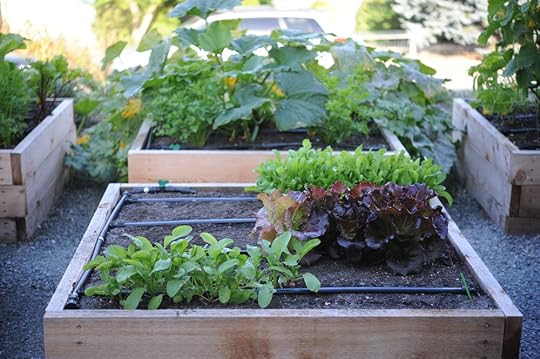


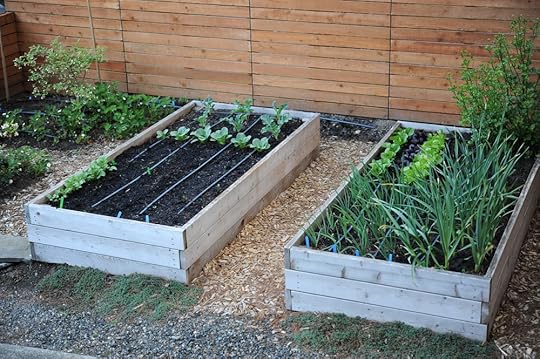



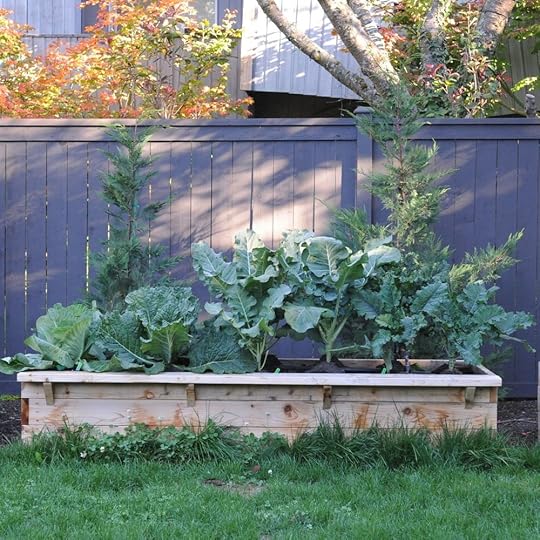
Like what you hear? Please share our podcast with a friend. Subscribe on iTunes or your favorite podcast player so you never miss a beat. And we'd really appreciate you showing us some love by leaving a rating and review on iTunes.
Have a topic you'd like see us dig in to? Leave us a note in the comment section below or #EBpodcast on Instagram and Twitter!
We need your support to keep make fresh, quality weekly content! Support us here:

November 18, 2016
Encyclopedia Botanica Podcast, Episode 22: Sheet Mulching

This episode is for those of you out there who may not have a vegetable garden yet, or who are planning to expand an existing growing space. Or maybe you're thinking about adding some new beds for the next growing season. We're talking about how sheet mulching might be a good technique for you. Mulching your future garden space over the winter can give you a jumpstart on the garden building process for next season.
HOW TO LISTEN:Listen right now in your browser by clicking above.Subscribe in iTunes (or your favorite podcast player) to have our podcasts sent directly to your device.SHOW NOTES:In this episode, we discuss:
Applications for sheet mulchingMaterials that can be used for sheet mulchingBasic steps for sheet mulchingImportant Take-aways:
Sheet mulching is a term that simply means covering the ground with a thick layer of material in order to smother existing plant matter often times, but now always, with the intention of creating a space for new plantings.Mulching your future garden space over the winter can give you a jumpstart on the garden building process for next season.While wood-framed raised beds are by far the most popular garden type we build, they are certainly more costly than simple in-ground raised beds and may not be the best choice for every garden space.If you are planning to build wood framed beds on the site, you may consider sheet mulching with a woody material like bark mulch or wood chips and then building the beds on top of this mulch.If you are sheet mulching an area for a planting of large perennial shrubs or trees, you'll want to dig the holes and plant before sheet mulching.Heard on the Episode:“There's plenty of physical work when it comes to gardening, so sheet mulching is an opportunity to work smarter and not harder! ” - Hilary Dahl
“If the cardboard boxes you're using for sheet mulching have plastic tape on that, you'll want to remove that. Otherwise, you'll be pulling strips of plastic tape out of your new garden beds in the spring!” - Kellie Phelan


Like what you hear? Please share our podcast with a friend. Subscribe on iTunes or your favorite podcast player so you never miss a beat. And we'd really appreciate you showing us some love by leaving a rating and review on iTunes.
Have a topic you'd like see us dig in to? Leave us a note in the comment section below or #EBpodcast on Instagram and Twitter!
We need your support to keep make fresh, quality weekly content! Support us here:




